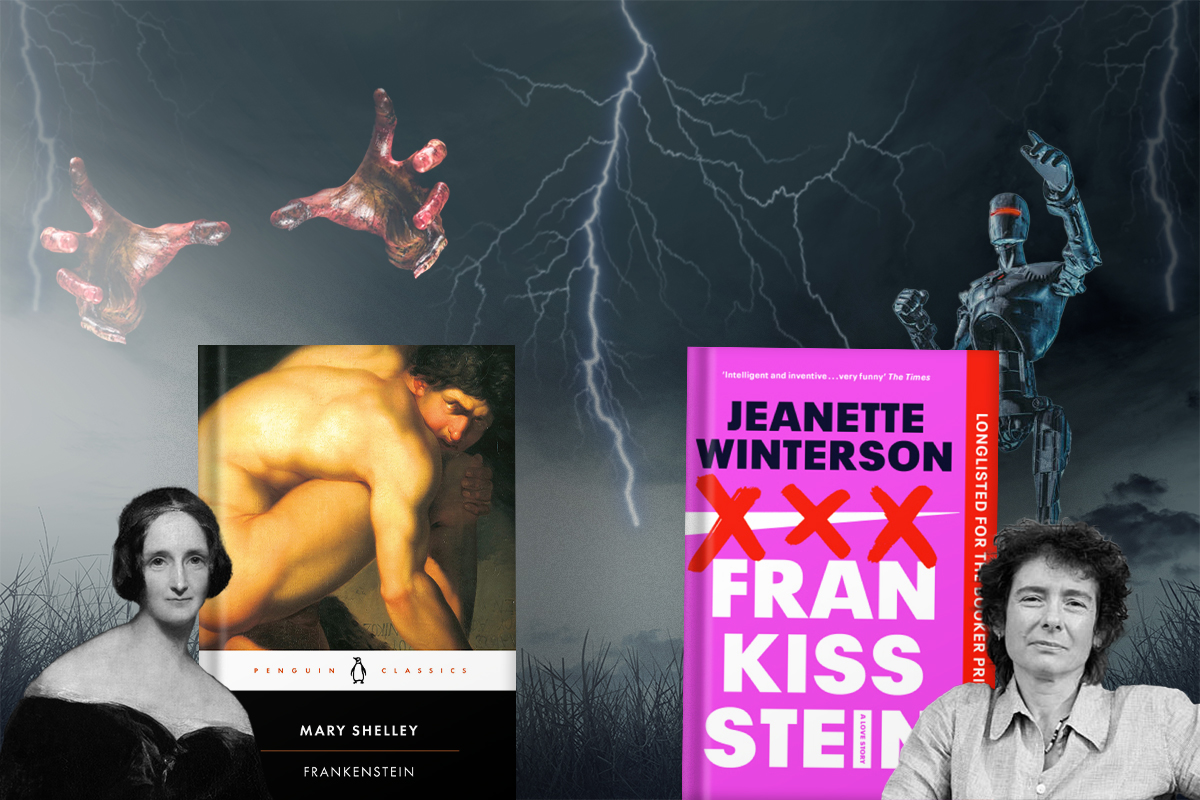
Mary Shelley’s Frankenstein was a call to question our understanding of what a monster is. Can a human being be a monster? Can a monster be human? With Jeanette Winterson’s literary adaptation, Frankissstein, the answer becomes a bit clearer. By Paridhi Badgotri
Against the backdrop of scientific curiosity of the time, Mary Shelley’s 1816 book Frankenstein was a literary revolution. Notwithstanding its metaphors, the novel triggered a new way of looking at the creation of life through science. Approximately 200 years later, Jeanette Winterson reimagines the kind of novel Shelley would have written in the present day, given our sociopolitical realities and the looming possibility of Artificial Intelligence and the accelerated advancement of robotics and biotechnology.
Since the 1830s, Shelley’s nameless creature, who has been popularised by his fictional creator’s name, Frankenstein, is often used as a trope to denounce transgender people as monstrous and man-made products. Winterson uses this derogatory corruption of the word to own the transgender imagination with her novel Frankissstein. Not only does the novel intersect science and gender fluidity, but it also questions what it means to have a body and be human. The novel begins with the story of Shelley composing Frankenstein and seamlessly leaps into the present-day story of Ry Shelley, a transgender doctor who describes himself as ‘hybrid’. Winterson engages with hybridity as a leitmotif, not only with respect to gender but also when she merges 19th-century Romanticism with the 21st-century Modernist world of post-Brexit Wales. Ry meets and develops a philosophical and romantic interest in Victor Stein, a celebrated professor working on a ‘post-human’ world with self-designing evolution of life on Earth. As a medical doctor, Ry provides Victor body parts for his robotic prostheses, and as a partner, he presents him a world beyond the binary one that Victor thinks is possible only with AI. Victor sees the possibility of transhumanism through Ry: “You aligned your physical reality with your mental impression of yourself,” he tells Ry. “Wouldn’t it be a good thing if we could all do that?” Victor’s business partner just wants to create female sexbots to satisfy male needs, but Victor’s vision is to build a future unconstrained by any physical form, in which human and automated consciousness transcend gendered bodies.
In Winterson’s novel, the 19th-century characters of Mary Shelley’s world seek answers to questions of reinventing the body, whereas the 21st-century characters are engrossed with the reinvention of consciousness. The parallels between Mary Shelley and Ry Shelley are not limited to their names and themes. Winterson often puts both of them into direct conversation with each other so they exist simultaneously. Like Shelley’s doctor, Ry also feels detached with the AI’s development. Winterson’s novel then is an affirmation of the fact that we have technology to redesign ourselves, but for its management, we require a technology that understands us.
With the advent of artificial intelligence, we are faced with difficult philosophical questions: What is self? What is reality? How do we use language to communicate with another form consciousness? The answers may not be immediately obvious with respect to AI, but a fictional story from the 19th-century offers a starting point. Frankenstein and his monster are known under the same name. His monster was his other half. He tries to deny his own monstrosity by blaming his creation as wretched. When Frankenstein kills himself, the monster dies—his other self is left with no purpose in life without his creator, as they are essentially two parts of one being. The monster is Frankenstein and Frankenstein is the monster. The same was the case with Shelley, with Ry, and indeed, with each one of us. The human condition is imperfect. It has monstrous elements that are undeniable. And our monstrosity is to be human.
Related: How Reading Gabriel García Márquez Changed My Perception of Reality

1 thought on “Frankenstein and Frankissstein: A Probe into Humanly Monstrosity”